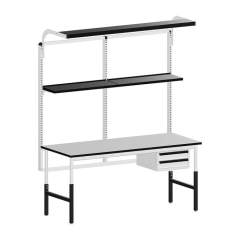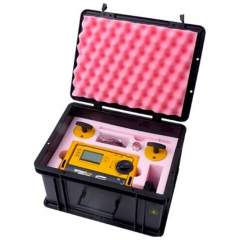JBC's Contribution to Advanced Soldering Applications
JBC's Contribution to Advanced Soldering Applications
Blog Article
High-Performance Soldering Stations by JBC
Soldering is at the heart of modern technology, joining the tiniest parts on sophisticated enterprise boards. As devices shrink and their complexity rises, the need for precision, efficiency, and reliable answers in soldering has never been jbc higher. That is where sophisticated soldering methods and tools step in, transforming the landscape of technology assembly.

Sophisticated Soldering Strategies
Soldering is a technique applied to join two pieces of metal together by melting a gel substance, named solder, between them. Typically, this is done using a heated iron and personally using the molten solder.
Nevertheless, with the increasing demand for accuracy and efficiency in technology construction, new sophisticated ways of soldering have emerged. These practices offer improved get a handle on, accuracy, and repeatability, making them essential in modern electronics manufacturing.
Floor Support Technology (SMT)
Surface install technology (SMT) requires connecting electric components straight onto the top of a printed enterprise panel (PCB).
Moving the Soldering Landscape
Throughout the last decade, miniaturization in consumer electronics has improved by almost 65%, forcing companies to adopt smarter approaches. Components like microprocessors and multi-layer boards involve pinpoint reliability that traditional soldering only can't guarantee. That's why skilled professionals are moving towards innovative temperature-controlled soldering programs and intelligent soldering tools.
Recent business studies show a 401(k) upsurge in investments toward intelligent soldering alternatives between 2019 and 2023. Operating factors include the demand for high-performance technology, especially in the medical, automotive, and aerospace sectors.
The Rise of Temperature Accuracy
One critical development could be the adoption of soldering alternatives that provide real-time heat control. Data points to a 35% reduction in disappointment prices whenever using temperature-regulated soldering irons compared to their old-fashioned counterparts. These resources quickly calibrate and maintain temperature degrees, blocking solder cool joints or overheating fragile components.
Professionals record that adapting to these methods decreases rework time by almost 25%, more emphasizing the economic and creation benefits.
Smarter Resources for Smaller Work
Still another development could be the move towards ergonomic, user-friendly soldering stations. Surveys among electronics experts suggest that 72% prefer methods with fast-heating recommendations, digital shows, and programmable profiles. This change isn't just about efficiency; ergonomic design cuts down on office injuries and weakness, primary to higher productivity.
Complicated digital jobs today often need precision at the micron level. Sophisticated soldering pencils with programmable feedback and micro-tweezers have swiftly become essential. Statistical reviews from big construction firms show up to and including 50% boost in first-pass produces after adding these advanced tools.
The Growing Influence of Data in Soldering

Market data display a fivefold escalation in the ownership of data-enabled soldering programs in the last five years. By logging temperature, suggestion life, and actually operator measures, these clever techniques give actionable insights. Quality get a handle on clubs power this information to tighten processes, considerably reducing the deficiency rate across production lines.
Looking Forward in Complicated Electronics Construction
The technology industry's battle towards smarter, smaller, and more technical types is only going to increase requirements on soldering. Trending data obviously spotlight how modern, intelligent soldering solutions are now a basis for high-quality electronics.
For technicians, staying forward means knowledge and adopting these next-generation resources and workflows. The data is clear: people who spend money on better soldering alternatives can lead the way in performance, stability, and successful generation for the following trend of complicated electronic devices. Report this page